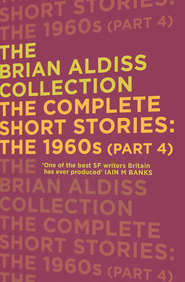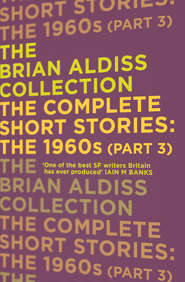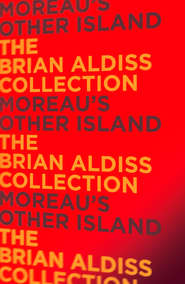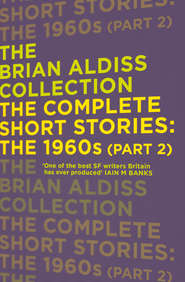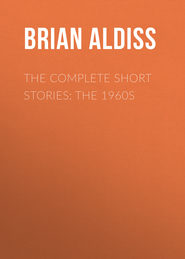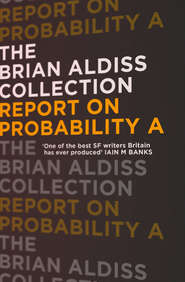По всем вопросам обращайтесь на: info@litportal.ru
(©) 2003-2024.
✖
Collected Essays
Настройки чтения
Размер шрифта
Высота строк
Поля
‘Once and for all, I’ve declared myself against life and people, on the side of otherness and indifference, isolation, the mineral beauty of the nonhuman world’—so says a character in ‘High in the Mountains’, speaking in the voice of alienation.
‘All we see of the mentally ill’, says Carl Jung, ‘regarding them from the outside, is their tragic destruction, rarely the life of that side of the psyche which is turned away from us.’ Kavan shows us the hidden side, and it has its beauty, as it struggles to make sense of an illogical world. Extracts similar to the ones quoted above can be taken almost at random from Kavan’s writings, showing her alienation, her madness.
Yet, as her friend Raymond Marriott warns us, she was in many ways an ordinary and pleasant creative person, chic, generally fun to be with. The fiction remains at least at arm’s length from the facts of her life. Writers have many reasons for using a persona not entirely congruent with their own natures, for fact is more complex than fiction. What rises from the printed page is part of an elaborate game of hide-and-seek which a writer plays, perhaps unconsciously, not necessarily with the reader but with herself or himself. Kavan is dextrous in the use of symbols, and symbols are easily mistaken for the real thing.
Although she often looked outwards with a shrewd and witty eye—’the church clock is calling the hour again in its dull voice’, as she says in ‘My Madness’, and we have all heard that particular chime—all roads lead back, like the strands of a web, to the spider of her self-obsession.
Yet hers is not a fiction of claustrophobia. The prose is too fine-spun for that. Her longing for abstraction takes refuge in its symbols: Madness, Ice, China—as one should say Trial, Castle, America. Her narcissism flew to another universe, ethereal and ‘on the side of otherness’. Hence Kavan’s great attraction, that she sees beyond the personal to an impersonal infinity. She is not a victim but a creator, not a mad thing but a winged thing.
Her literary evolution is of remarkable interest. Born somewhere at the turn of the century (the imprecision is necessary, for she would never reveal her age), she was then plain Helen Edmonds. That did not satisfy her. A divine discontent was on the move in her.
The chilly sexuality in the novel Let Me Alone, in its very title, perhaps conveys something of what was happening to Helen Edmonds. In that novel, Anna is the protagonist, taken to the East against her wish. Findlay, Anna’s lover, finally holds her in his arms. The night of the country now called Sri Lanka is about them. ‘For the moment, she was open to him.’ Yet they do nothing; not so much as a kiss is exchanged. The isolation is unbridgeable. ‘They were in different worlds.’
That seems to have been a lifelong problem, not merely for the fictional Anna but also for the real one.
After the ineffectual encounter with Findlay, Anna is raped by her husband, Matthew. She suffers atrociously, yet her spirit remains cold; ‘nor did he ever become real to her’.
The sense of unreality, perhaps the heart of symbolism, was a lifelong problem. And here indeed the fictional character—as a vampire is supposed to take over the living—becomes imposed upon the form of the author.
A contemporary reader of Let Me Alone feels a shock when the irreconcilable Matthew and Anna are introduced at an up-country club in Burma as ‘Mr and Mrs Kavan’. The very words seem ill-assorted. But Let Me Alone was first published in 1930, and the author’s name on the title page given as Helen Ferguson.
Helen Ferguson evidently felt that she had defined herself in the character of Anna, who so courts yet fears isolation. Shortly thereafter, her own marriage failing, she encountered the writings of Franz Kafka, and changed her name by deed poll to that of the character she had invented, Anna Kavan. Art inundated nature.
This change of name, so full of masochism and pride, followed a period in a mental hospital, the period brilliantly defined in ‘My Madness’. It represented a transformation, the crossing of a frontier away from the real. Anna Kavan had converted herself, as writers sometimes do, but rarely so deliberately. From now on, the realm of fantasy commanded her, and she it.
The discontinuity of personality is reflected in the discontinuities of Kavan’s prose. The prose is always lucid, without latinate constructions, without long words or literary allusions; the complexity lies in what is omitted. Often the discontinuities are nothing short of terrifying, as for instance in some of the stories in the collection Julia and the Bazooka, made soon after Kavan’s death. That is to say, they may terrify the reader, although to the ‘I’ character they are merely the stuff of life. Living somewhere on an unnamed continent, you may find friends turn into tigers.
Much of the strength of the laconically entitled story, ‘A Visit’, in that same collection, derives from the proffered discontinuity of its opening sentence: ‘One hot night a leopard came into my room and lay down on the bed beside me’. We are at once in the unknown territory of the Douanier Rousseau, where communication between human and animal happens as punctually as the full moon.
‘A Visit’ dispels the notion that Anna Kavan’s writings are merely depressing. Such is not the case; and the luminosity of even the dark pieces gives light enough. In her sudden transitions of mood and feeling we see the kinship with Kafka, and perhaps even something of that concealed humour which was Charles Dickens’s gift to Kafka.
Many people are surprised to learn that when Kafka first read extracts from The Trial to Max Brod and their circle of friends, he could sometimes hardly continue for laughter. Similarly, Chekhov was first played outside his own country for tragedy, not comedy. Kavan’s reputation is at present for gloom, madness and paranoia. Not undeservedly. Yet the whisper of mocking laughter is often to be heard, even in the sybilline ‘Sleep Has His House’.
Kavan in person, too, did not always project her shadowed side. In conversation with her English publisher, Peter Owen—it’s to be doubted if there would be an Anna Kavan without a Peter Owen—I said something of this kind, having enjoyed her friendly company. Owen agreed. It took a while to see through the camouflage of normality; or perhaps, human nature being so diverse, one should rather say that the camouflage of tortured romanticism concealed much that was no more or less than normal. In either event, Anna was of smart, cheerful appearance. She enjoyed male company.
Neither in her appearance nor her behaviour did she reveal her incurable heroin addiction. As Peter Owen admits, it was a while before the fact of that addiction dawned on him.
When I met her, towards the end of her life, I too knew nothing of the heroin. By then, she had been on the habit for some thirty years. Heroin was her accomplice, her truce with reality. I saw only another dedication: to literature, and to that I responded.
Raymond Marriott, another long-term friend of Anna’s, emphasizes her worldly, everyday side, reminding us that she was a good gardener, an excellent painter, and a skilled designer of small houses.
* * *
Anna was friendly and welcoming, in the small house of her own design in Hillgate Street, in the Kensington district of London. I had selected Ice as the best science fiction novel of 1967, less from any firm conviction that it was science fiction, or from a desire to dismay rivals, than to draw attention to a splendid piece of writing which might have been overlooked in the face of more noisy claimants for public attention. We talked in the ordinary way of two strangers wanting to get to know each other, and I gave her a novel of mine which, I felt, also operated in the same regions of otherness as Ice.
Anna had some complaint about Cyril Connolly, the editor of Horizon, for whom she had worked in the war years. He could have been more supportive of her with regard to her own writing, she felt. It was the sort of remark anyone might make. She longed to have a reputation, and thought that perhaps my attention marked a new start; she liked the idea of being regarded as a science fiction writer. It sounded modern. One sees in her work the sort of modernism—love of cars and speed and so on, not to mention the ‘fast set’—which surfaces in Aldous Huxley’s novels.
Little financial reward had followed from the publication of her novels and stories. She was reduced to selling some paintings (of which the house seemed still full), including a Graham Sutherland she had liked; and there was the tiresome business of designing houses or their interiors for other people.
No doubt her eye for design was sharp. She showed me over her house, walking with a stick. I supposed her to be in her late sixties. Her home was cunning and discreet, garden and house interlocked. It would have been no great matter for a leopard to enter her bedroom. Exotic plants grew everywhere, indoors and out, and mirrors basked mistily among paintings. A pleasant place in which to exist, with a flavour of the admired Henri Rousseau about it.
I offered to do something about American publication for Ice, since she had no agent. I sent a copy of the novel to Lawrence P. Ashmead, then my publisher at Doubleday. Larry was—is—a fine and understanding editor, but it took him some while to work through the Doubleday machine.
Finally, he sent me a letter saying that Doubleday accepted Ice. Anna had just died. She died of heart disease on 6 December 1968; I read of her death in the obituary columns of The Times. It was not suicide. Only a week earlier, I had received a letter from her which concluded with the words, ‘Sorry this is such a disjointed note. I really don’t feel human at present’. The ice was closing in fast.
Doubleday’s hardcover edition was followed in the States by a funny little Popular Library (New York) paperback edition, which proclaimed on its cover, ‘Sci-Fi at its Best’. Of course, Ice is not sci-fi, and only marginally science fiction, existing as it does in that fertile area—increasingly fertile as the century diminishes—where unreality prevails and life strategies are not those of the false everyday world we have constructed between ourselves and what Kavan calls ‘no-times’.
‘Reality had always been something of an unknown quality to me’, she says at the start of Ice.
If one plays the game of categories, then Anna Kavan ranks as a symbolist, one of the few English symbolists. It is a rare breed, which is perhaps why she has found no protagonist to speak up for her. A slightly coterie publisher published and nourished her. She formed no alliances with other authors. Her name does not appear in The Oxford Companion to English Literature. Symbolism is not a part of the solid English mainstream of writing. We prefer our fictional protagonists to turn into successes or failures, rather than leopards.
The characters in Ice are designedly symbolic and nameless. The girl, the hero, the warden. The countries through which they travel are anonymous. Their decisions are makeshift, their actions almost random, their circumstances as arbitrary as the advance of the ice. Their world is ramshackle, and under sentence of death. In such a situation, war attains a positive value: ‘By making war we asserted the fact that we were alive and opposed the icy death creeping over the globe’.
The maddened military activity, the nameless nations, everything contributes to a sense of doom. Yet all is lively, mobile, even joyous after a fashion, since catastrophe for such affectless people is just a way of life. The response to catastrophe can only be indifference. ‘Once prominent states had simply dropped out of existence.’ States of mind also.
This vertiginous sense is counterpointed by the business of personal disintegration. ‘Something in her demanded victimization and terror, so she corrupted my dreams, led me into dark places I had no wish to explore. It was no longer clear to me which of us was the victim. Perhaps we were victims of one another.’
Ice lures us to the heart of Kavan’s writing, and to the peak of her achievement, where personal concerns become universalized.
That relationship with Kafka. What are we to make of it? ‘Helen Ferguson’s’ instinct to ally herself with the Czech writer was a true one. Kafka is clearly her literary and spiritual mentor. Both were self-torturers, both aspired to dissolve themselves into literature. ‘I have no literary interests, but am made of literature’, said Kafka. Their own personalities, deprived of self-respect through nature or more probably nurture (overweening fathers and mothers), sought an established basis in a projected writing self; the writing self became what could be cherished.
In comparison with Kafka, Kavan is a watercolourist. Yet direct comparison is unfair; Kafka remains one of the great dark beacons of twentieth-century literature. She still offers her original torments, and we do not forget that she was a painter as well as a writer, her canvasses also offering wry comment on her state of mind. Headless creatures hug one another, becoming one body. One head out-Januses Janus, its three heads perhaps girl, hero, warden, the watcher. And there was also the life of the drug addict, that decades-long communion with otherness. By the end, Kavan had created herself even more decidedly than her literary mentor. Hers is the honourable position of Kafka’s sister.
* * *
Anna Kavan is at present that uncomfortable thing awaiting final judgement, a cult figure. Her situation is as ambiguous as she could desire.
Indications are that her reputation may belatedly spread further. At the University of Tulsa, her newly discovered journals and diaries are being edited for publication. A biography has appeared.
Kavan’s friend, Rhys Davies, wrote a novelized version of her life, The Honeysuckle Girl, which it would be good to have reprinted.
Yet perhaps she would perversely become hostile to the world’s acclaim. It would not bring back the lost hours or the lost Sutherland. In one of her stories, ‘A Summer Evening’, she yearns towards a final grand gesture of alienation.
‘I can never go back to the living world unless I am changed completely … If this whole structure could be transmuted into something hard, cold, untouchable, unaffected by any emotion … then and then only, indifferent to isolation and independent of time, I might endure the world.
‘… Inexhaustible and impervious, I would stride all over the world, seeing everything, knowing everything, needing nothing and nobody … finally leaving earth and the last human being behind me and turning away to the most remote galaxies and the unimaginable reaches of infinite space.’
1. David Callard, The Case of Anna Kavan, London, Peter Owen, 1992.
CAMPBELL’S SOUP (#ulink_9979b1ea-932f-5fef-902d-f678e191400a)
Setting nostalgia aside, what was achieved by Astounding Science Fiction under the editorship of John Wood Campbell? Campbell edited this famous magazine from May 1938, when he took full charge, until he died in July 1971, at the age of sixty-one. It was a long tenure. Many of us still think of those years, particularly the magazine’s rich decades of the 1940s and 1950s, as ‘Campbell’s years’.
The situation must be faced, that the stories in which we gloried in our youth become tarnished on a disillusioned re-reading, many years later. The revelations in the stories are now part of our world-outlook; that they have become incorporated in, have formed, our way of life is a tribute to their earlier power.
It is hard to define exactly what gives a story or novel perennial appeal. We’re dealing here with the fragile, things not designed to last, and sometimes written in desperation for four cents a word.
One reason why science fiction is so little regarded is because it is often ahead of its time, and therefore unpalatable to the general or even the literary reader. By ‘ahead of its time’ we mean mainly forward-looking in interests.






